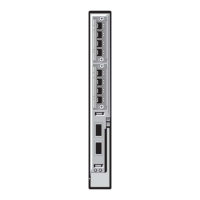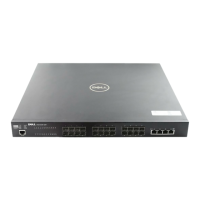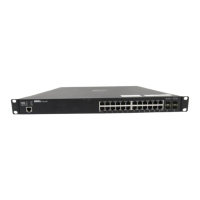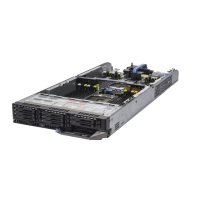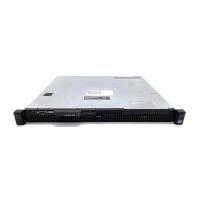Service Provider Bridging | 965
Dynamic Mode CoS for VLAN Stacking
Dynamic Mode CoS for VLAN Stacking is available only on platforms: c s
One of the ways to ensure quality of service for customer VLAN-tagged frames is to use the 802.1p
priority bits in the tag to indicate the level of QoS desired. When an S-Tag is added to incoming customer
frames, the 802.1p bits on the S-Tag may be configured statically for each customer or derived from the
C-Tag using Dynamic Mode CoS. Dynamic Mode CoS maps the C-Tag 802.1p value to a S-Tag 802.1p
value.
Figure 46-12. Statically and Dynamically Assigned dot1p for VLAN Stacking
When configuring Dynamic Mode CoS, you have two options:
a mark the S-Tag dot1p and queue the frame according to the original C-Tag dot1p. In this case, you
must have other dot1p QoS configurations; this option is classic dot1p marking.
b mark the S-Tag dot1p and queue the frame according to the S-Tag dot1p. For example, if frames
with C-Tag dot1p values 0, 6 and 7 are mapped to an S-Tag dot1p value 0, then all such frames are
sent to the queue associated with the S-Tag 802.1p value 0. This option requires two different
CAM entries, each in a different Layer 2 ACL FP block.
Note: The ability to map incoming C-Tag dot1p to any S-Tag dot1p requires up to 8 entries to be installed
in the Layer 2 QoS and Layer 2 ACL table for each configured customer VLAN. The scalability of this
feature is limited by the impact of the 1:8 expansion in these CAM tables.
DA SA 0x0800 DATA
DA SA 0x8100 100 3
DA SA 0x9100 400 1 0x0800 DATA
DA SA
Untagged S-Tag with statically-assigned dot1p
C-Tagged
S-Tag with mapped dot1p
S-Tag
S-Tag
C-Tag
C-Tag
0x9100
400 4
0x8100 100 3
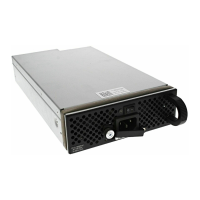
